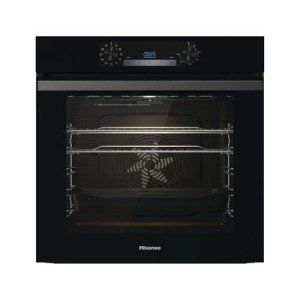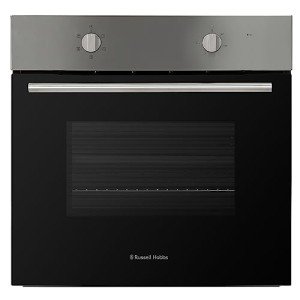The Expert Guide To Built In Electric Ovens
Understanding Built-In Electric Ovens: A Comprehensive GuideIn the last few years, the kitchen has transformed from simply a cooking space to a center for household events, entertaining visitors, and enjoying quality time. One of the most essential parts of contemporary culinary experiences is the kitchen oven. Built-in electric ovens have acquired immense popularity, thanks to their space-saving designs, smooth looks, and advanced features. This post offers an extensive exploration of built-in electric ovens, covering their types, advantages, installation considerations, maintenance suggestions, and an extensive FAQ section.What Are Built-In Electric Ovens?Built-in electric integrated oven ovens are integrated hob and oven cooking systems developed to be set up directly into kitchen cabinets or walls. Unlike traditional freestanding ovens, built-in models supply a seamless appearance, adding to the general style of the kitchen space. They come geared up with numerous cooking functions, advanced innovation, and energy-efficient functions. Kinds Of Built-In Electric OvensBuilt-in electric ovens been available in different styles to meet diverse cooking requirements and kitchen designs. Here are the most typical types:
Kinds Of Built-In Electric OvensBuilt-in electric ovens been available in different styles to meet diverse cooking requirements and kitchen designs. Here are the most typical types:
- Single Ovens: Ideal for smaller sized cooking areas, single ovens use sufficient cooking area for daily meals without using up too much space.
- Double Ovens: For passionate cooks or families that delight in hosting dinner parties, double ovens offer the capability to cook several meals at different temperature levels at the same time.
- Wall integrated ovens: Wall ovens are installed at eye level, making them easily available while getting rid of the requirement to bend down. They typically come in single or double setups.
- Mix Ovens: These versatile appliances integrate standard oven cooking with microwave performance, permitting much faster cooking times while protecting food flavor and texture.
- Steam Ovens: Designed for health-conscious cooks, steam ovens utilize steam to cook food, maintaining moisture and nutrients. They are perfect for vegetables, fish, and rice meals.
Advantages of Built-In Electric OvensBuilt-in electric ovens use many advantages for property owners wanting to boost their cooking experience. A few of the advantages include:
- Aesthetic Appeal: Their smooth style permits for higher design flexibility, fitting flawlessly into kitchen cabinetry and creating a sleek look.
- Space Efficiency: Built-in ovens save important flooring space, making them an outstanding choice for compact kitchens.
- Enhanced Functionality: Many built-in electric ovens incorporate the most current cooking innovations, such as convection cooking, wise controls, and numerous cooking modes.
- Easy Accessibility: Models set up at eye level are easier to access, decreasing strain while checking or removing food.
- Increased Home Value: Installing a high-quality built-in electric oven can increase the resale value of a home due to its contemporary and premium features.
Installation ConsiderationsWhile built-in electric ovens use many advantages, correct setup is essential to guarantee they function efficiently. Below are key factors to consider to bear in mind:
- Cabinet Size: Ensure that the cabinetry where the oven will be set up is sized properly. Many built-in ovens come with particular measurements that must be complied with throughout setup.
- Electrical Requirements: Built-in electric ovens require a devoted electrical supply. House owners ought to speak with a licensed electrician to ensure that the wiring satisfies the essential specs.
- Ventilation: Unlike gas ovens, electric ovens typically do not require venting, but sufficient air blood circulation is necessary to prevent overheating.
- Positioning: Consider the oven’s positioning worrying kitchen workflow. It must be easily available while thinking about clearances from other kitchen appliances.
Installation Steps
- Step the cabinet area to guarantee the oven fits.
- Ensure the electrical supply is ready.
- Thoroughly place the oven within its designated cabinet.
- Protect it according to manufacturer guidelines.
- Link to power and test its functionality.
Maintenance Tips for Built-In Electric OvensTo lengthen the life of a built-in electric oven and ensure its dependable efficiency, execute these maintenance suggestions:
- Regular Cleaning: Wipe spills and discolorations after each usage. Usage suitable cleaners, preferably gentle, to prevent damaging the interior surfaces.
- Check Seals: Inspect the door seals for cracks or damage, and change them if needed to maintain performance.
- Calibrate Temperature: Over time, ovens might lose precision. Utilize an oven thermometer to validate temperature level readings and recalibrate if required.
- Yearly Professional Service: Schedule an expert examination and maintenance service at least when a year for thorough checks and repairs.
Regularly Asked Questions (FAQs)1. What size built-in electric oven do I need?The size of the oven ought to depend on your kitchen design and cooking requirements. Requirement wall ovens usually range from 24 to 30 inches in width.2. Can I install a built-in electric oven myself?While some homeowners may have the abilities to install their oven, it is normally suggested to employ an expert to guarantee proper installation and compliance with security standards.3. What functions should I look for in a built-in electric oven?Think about functions like convection cooking, self-cleaning alternatives, wise innovation, and several cooking modes to improve your cooking experience.4. How much does a built-in electric oven cost?Rates range substantially based on brand, features, and size. A standard model may begin around ₤ 500, while high-end alternatives can go beyond ₤ 3,000. 5. Are built-in electric ovens energy-efficient?The majority of contemporary electric ovens come geared up with energy-efficient innovations, assisting to decrease energy intake while preserving cooking efficiency.Built-in intergrated electric oven ovens use a mix of design, convenience, and advanced cooking abilities, making them a necessary addition to today’s cooking areas. By understanding the types, benefits, built-in electric ovens installation factors to consider, and proper upkeep, property owners can make educated choices that enhance their cooking experiences while boosting their kitchen’s aesthetics. Whether one is a skilled chef or a casual cook, investing in a built-in electric oven can change the cooking experience into a delightful cooking journey.
5. Are built-in electric ovens energy-efficient?The majority of contemporary electric ovens come geared up with energy-efficient innovations, assisting to decrease energy intake while preserving cooking efficiency.Built-in intergrated electric oven ovens use a mix of design, convenience, and advanced cooking abilities, making them a necessary addition to today’s cooking areas. By understanding the types, benefits, built-in electric ovens installation factors to consider, and proper upkeep, property owners can make educated choices that enhance their cooking experiences while boosting their kitchen’s aesthetics. Whether one is a skilled chef or a casual cook, investing in a built-in electric oven can change the cooking experience into a delightful cooking journey.